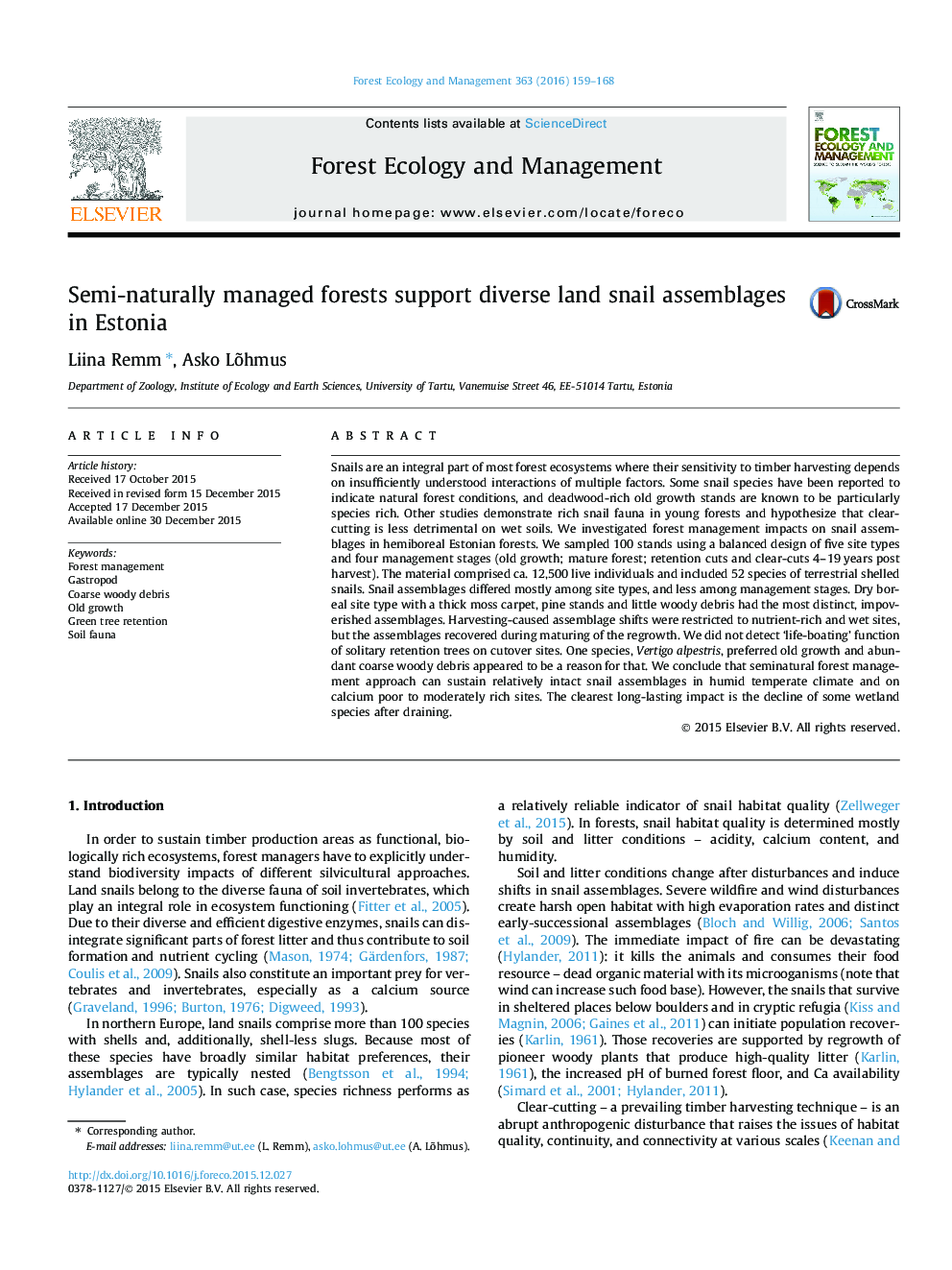| کد مقاله | کد نشریه | سال انتشار | مقاله انگلیسی | نسخه تمام متن |
|---|---|---|---|---|
| 86020 | 159157 | 2016 | 10 صفحه PDF | دانلود رایگان |
• We sampled >12,500 snails in old forests and cutovers in five site types.
• Seminatural forestry approach sustained relatively intact snail assemblages.
• Solitary retention trees did not have an impact on snail assemblages.
• In the absence of rocks, Vertigo alpestris depends on deadwood-rich old forests.
• Snails are vulnerable to site type and forest structure modifications.
Snails are an integral part of most forest ecosystems where their sensitivity to timber harvesting depends on insufficiently understood interactions of multiple factors. Some snail species have been reported to indicate natural forest conditions, and deadwood-rich old growth stands are known to be particularly species rich. Other studies demonstrate rich snail fauna in young forests and hypothesize that clear-cutting is less detrimental on wet soils. We investigated forest management impacts on snail assemblages in hemiboreal Estonian forests. We sampled 100 stands using a balanced design of five site types and four management stages (old growth; mature forest; retention cuts and clear-cuts 4–19 years post harvest). The material comprised ca. 12,500 live individuals and included 52 species of terrestrial shelled snails. Snail assemblages differed mostly among site types, and less among management stages. Dry boreal site type with a thick moss carpet, pine stands and little woody debris had the most distinct, impoverished assemblages. Harvesting-caused assemblage shifts were restricted to nutrient-rich and wet sites, but the assemblages recovered during maturing of the regrowth. We did not detect ‘life-boating’ function of solitary retention trees on cutover sites. One species, Vertigo alpestris, preferred old growth and abundant coarse woody debris appeared to be a reason for that. We conclude that seminatural forest management approach can sustain relatively intact snail assemblages in humid temperate climate and on calcium poor to moderately rich sites. The clearest long-lasting impact is the decline of some wetland species after draining.
Figure optionsDownload as PowerPoint slide
Journal: Forest Ecology and Management - Volume 363, 1 March 2016, Pages 159–168
